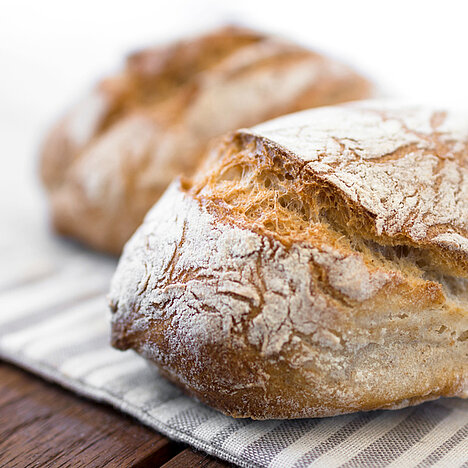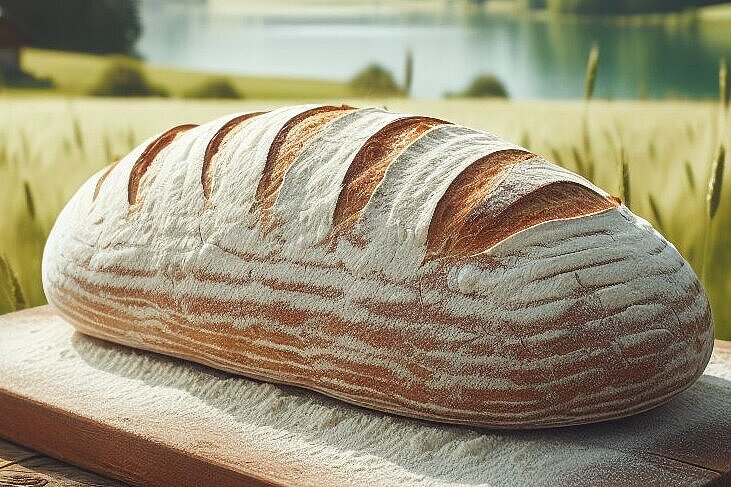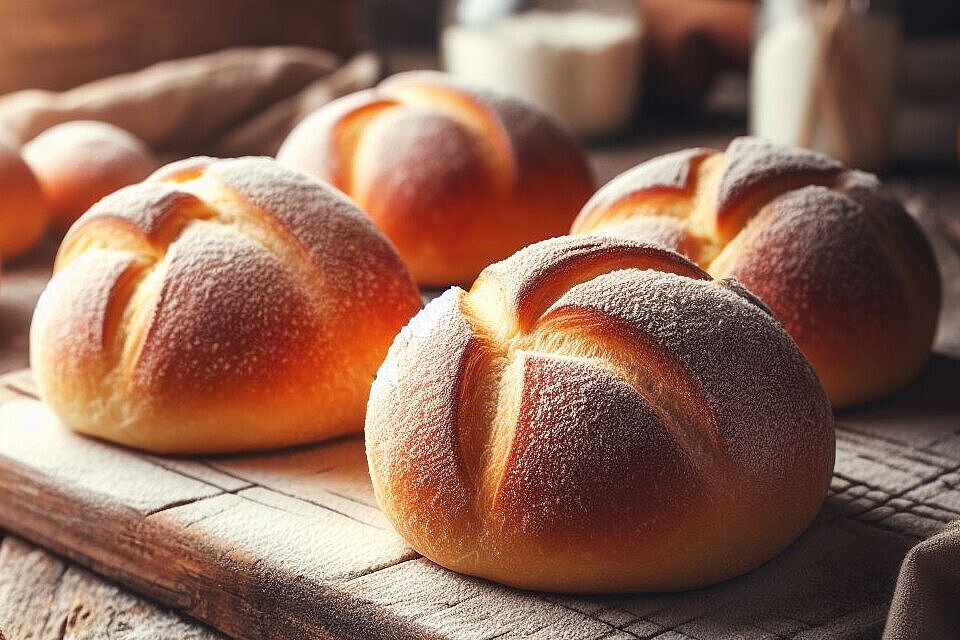Bread

What is bread?
Bread is a baked product made from flour, water, yeast or sourdough and possibly other ingredients such as salt, sugar, fat, seeds or nuts. Bread is baked in various shapes, sizes and flavors and is an important part of the human diet.
Bread mainly contains carbohydrates, which provide the body with energy, but also protein, fiber, vitamins and minerals. The nutritional value of bread can vary depending on the type of flour and additives.
Benefits of bread for dogs
Bread is not toxic to dogs and can be given in small amounts as a treat or reward. Bread can also soothe the stomach if the dog is suffering from diarrhea or vomiting.
Bread can also be used as a chew if it is hard and dry. Chewing bread cleans the teeth and massages the gums. It can also keep the dog busy and prevent boredom.
Disadvantages of bread for dogs
Bread is not a suitable staple food for dogs as it does not contain all the nutrients a dog needs. Bread has a high carbohydrate content, which can lead to obesity and diabetes if fed too often or in too large quantities.
Bread can also cause digestive problems if it is fresh or baked with yeast or sourdough. These ingredients can ferment in the dog's stomach and cause bloating, cramps or even a life-threatening stomach torsion.
Bread can also trigger allergies or intolerances if the dog is sensitive to gluten or other ingredients. Gluten is a gluten protein that is found in many types of grain such as wheat, rye or spelt. Gluten intolerance can manifest itself as a skin rash, itching, diarrhea or vomiting.
Which bread is suitable for dogs?
If you want to give your dog a piece of bread from time to time, you should follow a few rules:
- Choose bread made from wholemeal flour or gluten-free flour. These types of bread contain more fiber and nutrients than white bread or toast.
- Avoid bread with sugar, salt, fat or other additives such as chocolate, raisins or nuts. These ingredients can be harmful or toxic to dogs.
- Only give your dog stale or hard bread. Fresh bread with yeast or sourdough can be dangerous for dogs.
- Only give small amounts of bread. One or two slices a week is enough for a medium-sized dog.
- Observe your dog after eating bread. If he shows signs of discomfort or intolerance, you should stop giving him bread and consult a vet if necessary.
Bread is not a toxic food for dogs and can be fed as an occasional snack. However, bread should not be the dog's main food as it does not contain all the nutrients the dog needs.
Properties 3
Are you looking for other ingredients with a specific property?
Just click on them to find more.
If you notice any signs of hypersensitivity or poisoning in your dog, you should see your vet immediately. We are not a substitute for a vet, but we try to be as accurate as possible. Every dog reacts differently and we recommend you get a second opinion or consult your vet if in doubt.
Stay healthy and take good care of your four-legged friend!😊
Similar to Bread
Baguette contains no toxic ingredients for dogs such as chocolate, raisins or onions.Baguette can be used as a reward or as an activity for dogs. For example, you can spread a piece of baguette with...
Ciabatta is a traditional Italian bread that originated in the Veneto region. The name translates as "slipper" and refers to the flat and elongated shape of the bread. Ciabatta is made from a very...
Pumpernickel is a heavy, dark rye bread that originated in Germany. Its characteristic dark color and unique taste result from a long baking process at a low temperature, which allows the natural...
A bread roll is a small pastry made from yeast dough. The dough is formed into round or oblong shapes and cut with a sharp knife or scored with scissors. This creates the typical crust that cracks...



